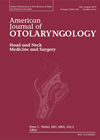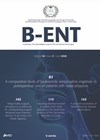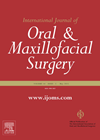
Journal Reviews
Chronic rhinosinusitis – a pre-malignant condition?
Nasopharyngeal carcinoma (NPC) is a relatively uncommon diagnosis in the West but is prevalent in Southeast Asia. Several factors have been established to be associated with a higher risk of developing NPC, including salted fish consumption, smoking, alcohol, and Epstein...
THRIVE: redefining airway management in endoscopic oesophageal surgery
Transnasal humidified rapid insufflation ventilatory exchange (THRIVE) is no longer just a tool to help anaesthetists secure a difficult airway. Thanks to the work of authors like Yang and colleagues, it is being revolutionised to provide apnoeic oxygenation during endoscopic...
Surgical variations in maxillomandibular surgery treating sleep apnoea
This is a scoping review further highlighting the success in curing sleep apnoea with a maxillomandibular complex advancement. The variations outlined are on East and Southeast Asian patients to reduce the aesthetic concern of bi-maxillary protrusion when large advancements are...
Thyroidectomy - a pictorial walk through the surgical steps
We as ENT surgeons work closely with the endocrinologist to provide MDT care for patients with a variety of pathologic conditions of the thyroid gland, including benign, malignant and hormonal disease processes. Surgery plays a central role for a variety...
Does transoral robotic surgery improve outcomes among patients with head and neck cancer of unknown primary?
A tonsillectomy and tongue base mucosectomy is becoming increasingly accepted as the optimal surgical intervention to aid in identifying the primary source of a p16+ / HPV-related squamous cell carcinoma (SCC) of unknown origin, given that this disease almost exclusively...
Lymph node metastases in papillary thyroid cancer
This retrospective Korean cohort study looked at the risk factors associated with bilateral lateral lymph node metastases in patients with unilateral papillary thyroid cancer. There were 11 patients who met the inclusion criteria across an 11-year period from 2009 to...
Helmets make a difference in bicycle injuries
This is a meta-analysis of maxillofacial injuries arising from riding a bicycle. The incidence of maxillofacial fractures in cycling accidents varies from 3-20% and, whilst the effectiveness of helmets in preventing traumatic brain injuries is well known, their protective effect...
A systematic review of adjunctive probiotic therapy in the management of chronic rhinosinusitis
It is generally understood that administering substances containing live microbiologically active micro-organisms (probiotics) enhances the treatment of chronic rhinosinusitis. Probiotics manipulate and rebalance the alterations occurring in the local microbiome in chronic rhinosinusitis patients. This results in propagation of healthy...
The push towards scarless parotid surgery
When dealing with benign parotid pathology, high expectations are placed on the operating surgeon to preserve key neurovascular structures, especially the animating facial nerve, through meticulous dissection. With time, there has been a greater emphasis on improving cosmesis in parotid...
Pre-habilitation in head and neck cancer – a literature review to guide best practice
Curative treatment of head and neck cancer (HNC) often requires surgery; however, outcomes are impacted by the complexity of the surgery and the patient population. Increasingly ‘Enhanced Recovery After Surgery’ (ERAS) protocols are being used to maximise patient outcomes and...
Active surveillance for papillary thyroid cancers – what is the risk of progression?
Papillary thyroid cancers (PTCs) are generally considered to be indolent malignancies with favourable outcomes. Active surveillance (AS) has consequently been trialled as a management option for small PTCs with no evidence of regional lymph node involvement, especially papillary thyroid microcarcinomas...
Factors associated with laryngopharyngeal reflux
This Chinese cross-sectional survey across three hospitals and 320 patients looked at the effect of unhealthy lifestyles and eating habits, as well as psychological difficulties, on the development of laryngopharyngeal reflux (LPR). All the participants underwent gastroscopy, laryngoscopy and various...














